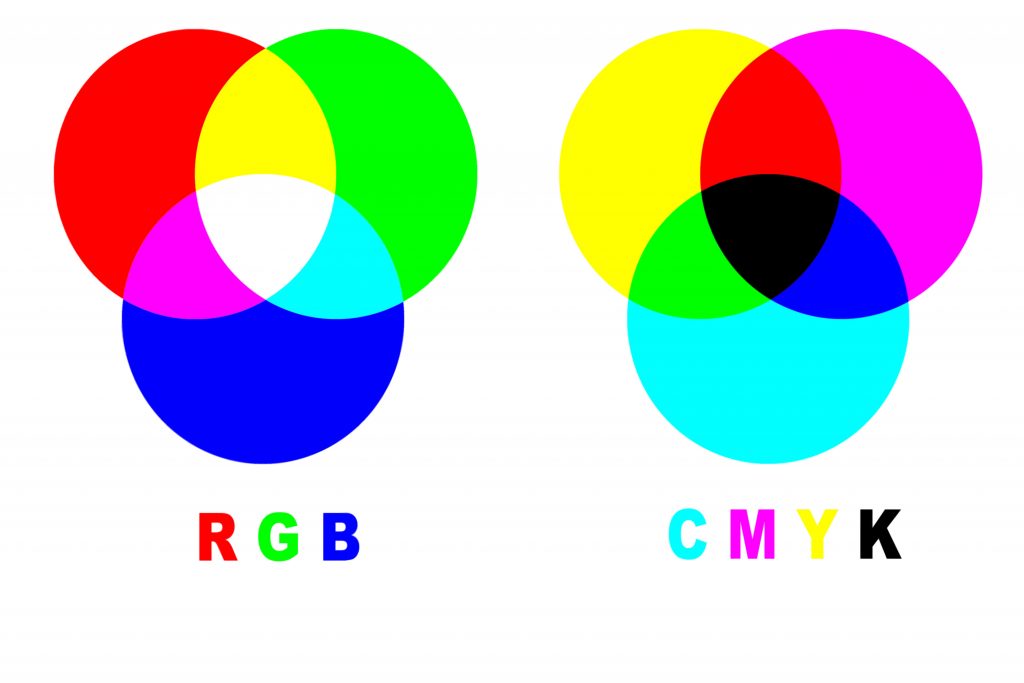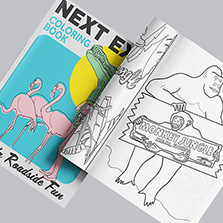
Understanding CMYK in Commercial Printing: A 2024 Perspective
What makes CMYK the master of color transformation, turning ordinary designs into captivating visual experiences?
Why does the CMYK color model hold the key to unlocking the full spectrum of print?
In this article, we’ll discuss the definition of CMYK, how this color process works in commercial printing and why it is the dominant color model.
Now, let’s crack the code.
What is CMYK?
CMYK is an acronym for Cyan, Magenta, Yellow and Black. CMYK refers to the 4 primary colors of pigment used in 4 Color Process Printing. The CMYK color model is fundamental in the printing industry, dictating how colors are mixed and applied on paper. In full color printing, every image is color separated into Cyan, Magenta, Yellow and Black in specific dot patterns that vary in size and frequency to create a combination of any color with a fraction of the ink.
CMYK represents the four primary colors of pigment used in the majority of color printing. This subtractive color model is integral to the printing process, where colors are created by subtracting light from a white background. Unlike its counterpart, the RGB model used in digital displays, CMYK relies on the physical mixing of ink to produce the desired hues on paper. The magic of CMYK lies in its ability to combine these four colors in various dot patterns and densities, enabling the reproduction of a wide spectrum of colors with just a fraction of the ink.

CMYK vs. RGB: A Comparative Look
Understanding the difference between CMYK and RGB is pivotal for anyone involved in both digital and print design. While CMYK subtracts colors from light, resulting in a diverse range of printable hues, RGB is an additive color model, creating colors by combining red, green, and blue light. This fundamental difference highlights the necessity of converting RGB files to CMYK before printing, ensuring that the vibrant colors seen on screen translate accurately to paper.

CMYK is a subtractive color spectrum. This means that these inks mask colors on a lighter background (like white paper). The CMYK ink subtracts the red, green and blue from white light and leaves the Cyan, Magenta, and Yellow. Black is the absence of color.

The CMYK color model works by partially or entirely masking colors on the lighter surface (paper or substrate). The ink reduces the light that would otherwise be reflected.
The RGB color model works opposite the way CMYK does
RGB is an additive color spectrum. When RGB colors overlap, the results are subtractive colors (cyan, magenta, yellow) RGB color model uses transmitted light. Additive color models use light to display color, while subtractive (CMYK) color models use reflected light.
RGB color space is primarily used on digital displays (computers, tablets, TVs, etc) and uses the light from the device to display the color. The colors result from transmitted light. When all spectrums from the RGB color space overlap, the result is white.

RGB will need to be converted to CMYK color space for printing
RGB Colors may look great on screen, but they will need to be converted to CMYK color space before supplying your art files to your printer. Read our article here on the color conversion process.
CMYK “Halftones” and Understanding the Process
A halftone is simply a group of large and small dots that when viewed at a distance, have the appearance of continuous shades of gray or color in an image.

The halftone process is a fascinating aspect of printing that allows for the illusion of continuous tone through the use of varying dot sizes and spacing. This technique is essential for reproducing detailed photographs and artworks in print, utilizing different line screens (LPI) to control color depth and density. Understanding LPI versus DPI (dots per inch) is crucial for designers and printers alike to achieve the desired clarity and resolution in the final print.
Halftone printing is a reprographic technique of breaking up an image into a series of dots in order to reproduce the full tone and color range of a photograph or monotone art work. This process simulates continuous tone imagery through the use of dots, varying in size and spacing. This process also uses various line screens and frequencies to create various densities and a wide range of reproducible colors. This line screen is also referred to as LPI (lines per inch). The line screen is the frequency that will control the depth of the colors, the amount of dots. For example, photorealistic images have an optimal line screen of 65, while simple color images would have an optimal line screen of 35. LPI (lines per inch) is NOT the same as DPI (dots per inch), which is another common printing term you’ve most likely heard as well.


The other factor involved in printing halftone images is what angle to output the dot pattern at. The angle is very important in order for the image to look correct. For example, if you have the incorrect angle and line screen combination, you will get a “Moiré” effect which makes the dot pattern appear like a checkerboard pattern and not a smooth image.
The Advantages of CMYK in 2024
In conclusion, CMYK is the industry standard for printing because of the science behind the color space and the substrate. Ink on paper must use the CMYK color space to achieve the optimum results by creating an unlimited number and shades of color. CMYK will produce full, dark, rich and vibrant colors to bring your project on paper to life!

As we embrace the latest advancements in printing technology, the significance of the CMYK color model remains unchanged. Its ability to produce an extensive range of colors and shades ensures that printed materials come to life with richness and vibrancy. Whether you’re working on business cards, brochures, or large-format prints, mastering CMYK is key to achieving superior color quality.
Ready to transform your ideas into vibrant printed realities? At PrintingCenterUSA, we harness the magic of CMYK to bring your designs to life with precision and brilliance. Whether it’s brochures, business cards, or banners, our expert team is here to guide you through every step of the printing process. Don’t wait to make a lasting impression – click here to start your project with us today and see the difference quality printing can make!















































